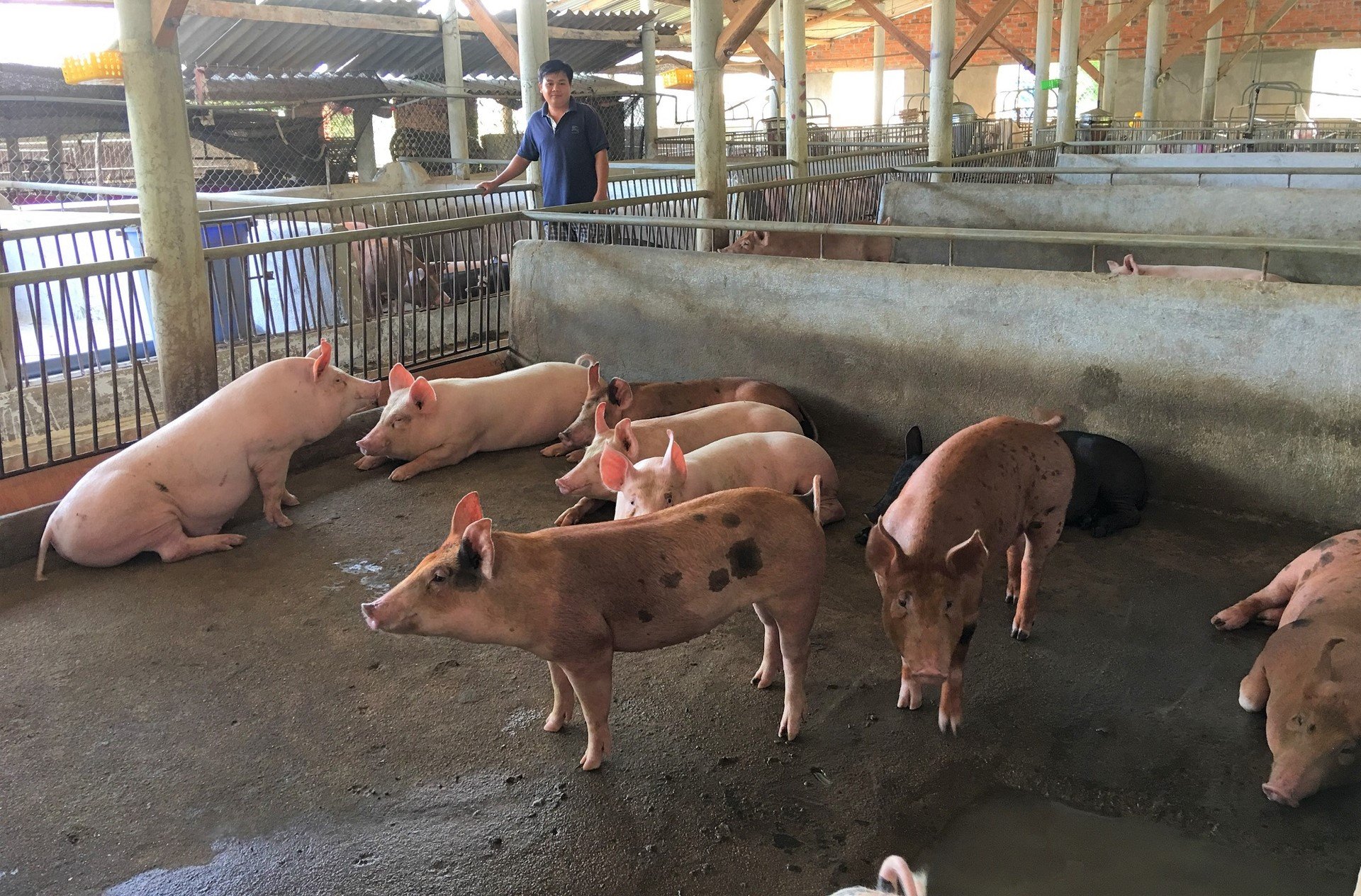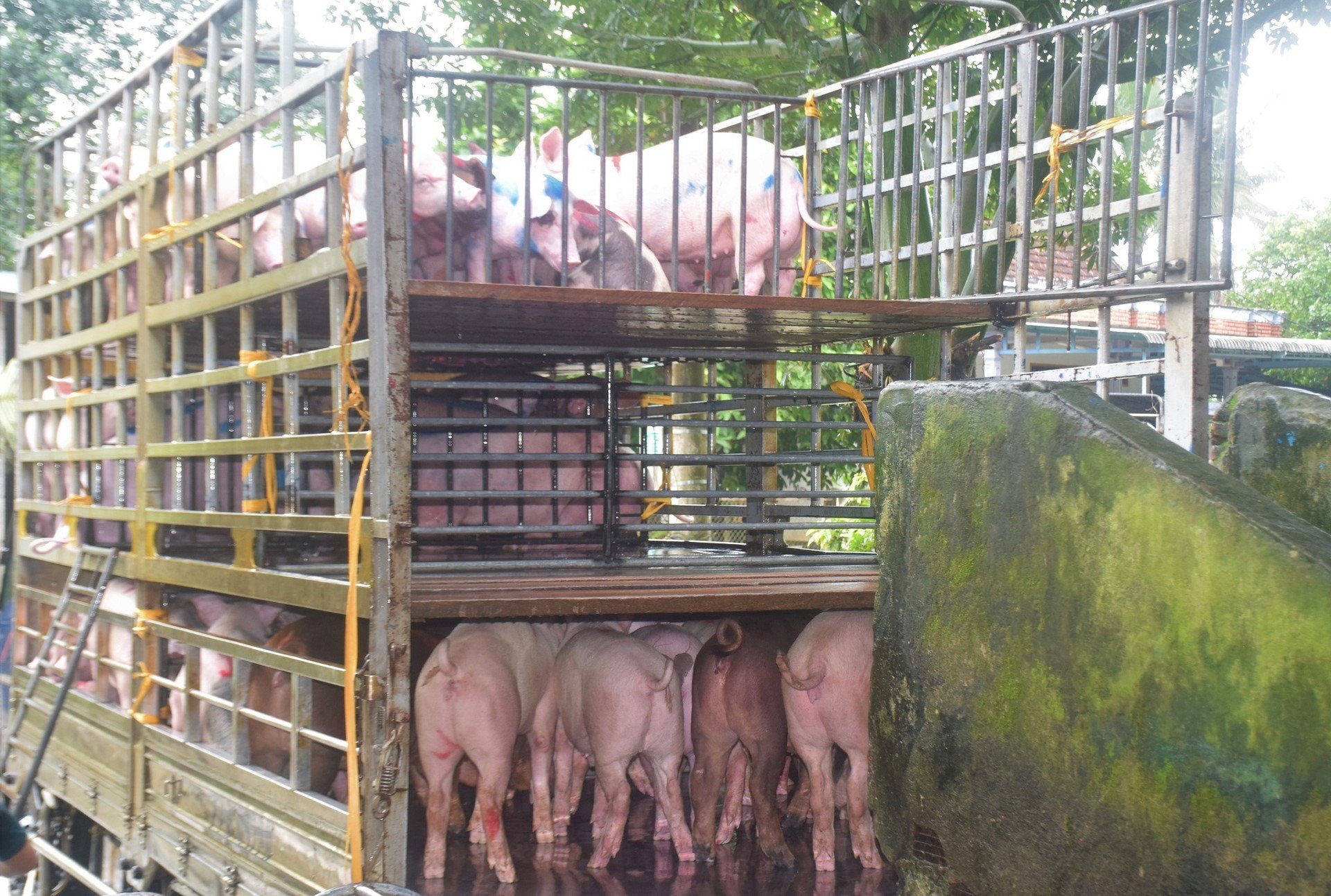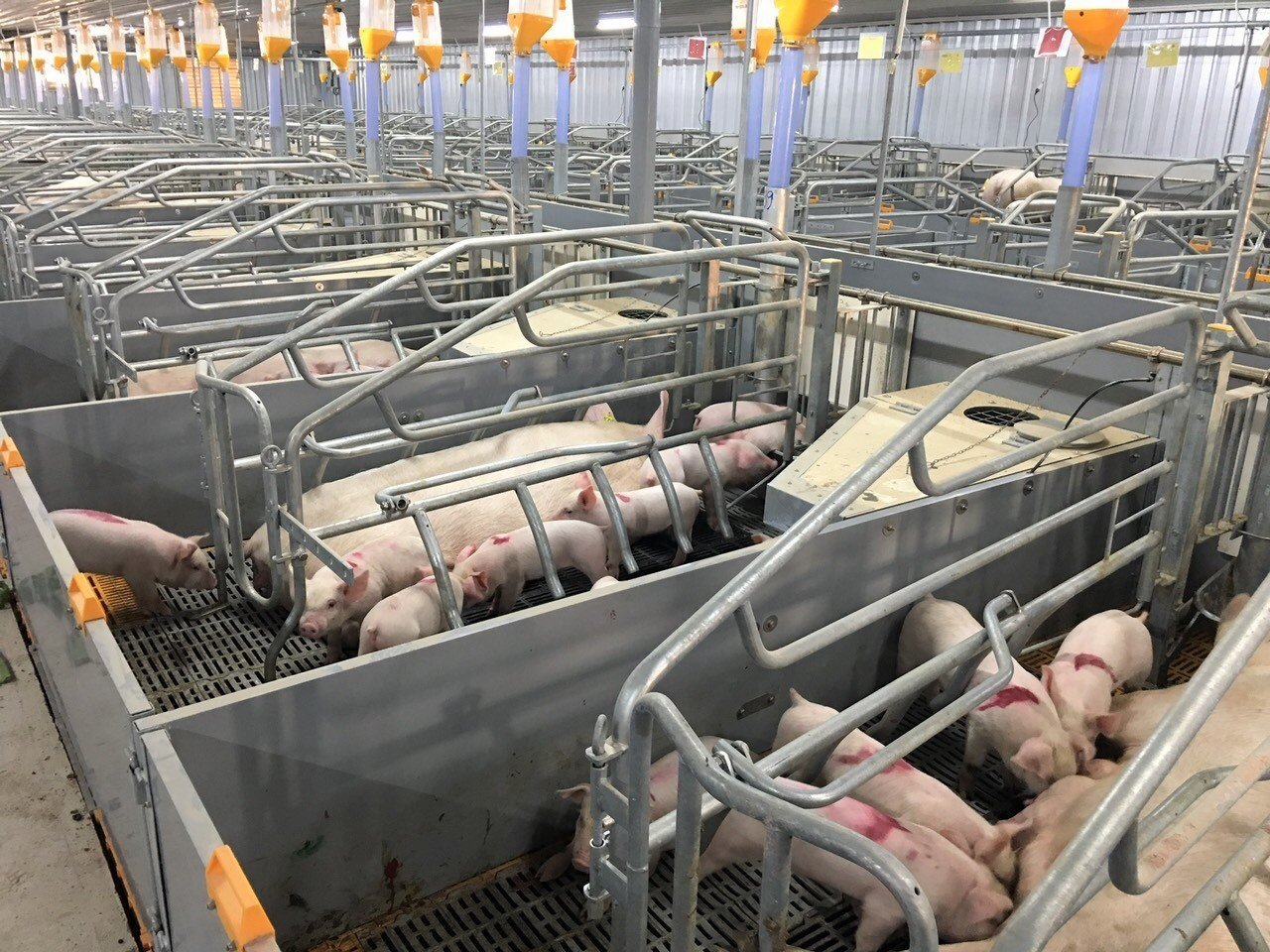September 27, 2025 | 14:45 GMT +7
September 27, 2025 | 14:45 GMT +7
Hotline: 0913.378.918
September 27, 2025 | 14:45 GMT +7
Hotline: 0913.378.918

Currently, Binh Dinh has 800 livestock facilities using livestock herd and disease management software with Blockchain technology. Photo: V.D.T.
In the early 2010s, Binh Dinh built an epidemiological map of porcine reproductive and respiratory syndrome (PRRS) and cholera in the pig herd. The map using GIS (geographic information system) technology initially supported identifying epidemic areas that had occurred in Binh Dinh and forecasting the possibility of disease transmission and emergence in localities in the province.
GIS technology has the advantage of helping management agencies have an overview of location and detailed information on livestock areas and animal slaughter, trading, and transporting points; identify points occurring diseases, radius of influence, and areas at risk of being affected on the GIS map, so that the functional branch can promptly propose effective control and prevention measures.
According to Mr. Huynh Ngoc Diep, Manager of the Binh Dinh Animal Husbandry and Veterinary Sub-Department, the GIS digital map is a particularly effective tool for veterinary management agencies, helping the functional branch control disease areas comprehensively and, at the same time, be able to compare the disease emergency at many different times.
However, in the past five years, the Binh Dinh functional branch has applied livestock herd and disease management software using Blockchain technology in the province. This is an advance in digitizing the work of disease management and control in the livestock herd in Binh Dinh province.

Blockchain technology software manages the livestock herd from farm to dinner table. Photo: V.D.T.
To effectively implement the declaration and management of Blockchain software, the Binh Dinh Provincial People's Committee directed the Statistics Office to coordinate with the Department of Agriculture and Rural Development to develop a plan to specifically assign tasks for implementing livestock herd and anti-epidemic information management software.
“The functional branch disseminates for farmers the meaning, rights, and responsibilities of participating in the program on livestock herd management and disease prevention and control in livestock farming. Livestock facilities grasp how to operate applications on smartphones to report the situation of livestock herds, diseases, consumption, and transportation; proactively and self-consciously report livestock data and disease situation at their facility," said Mr. Huynh Ngoc Diep.
Applying Blockchain technology to manage herds and control diseases in pig herds has helped the Binh Dinh livestock industry manage the total livestock herd regularly in the area, have quick and accurate information about livestock herds and livestock products, manage statistical information, and grasp the disease situation in the area to have timely and effective solutions for prevention and control.
Besides, this Blockchain software also helps the functional branch manage the application of biosafety, vaccination, and feed for pigs at livestock facilities. In particular, thanks to this software, the Binh Dinh functional branch can monitor disease-infected farms, the handling and disposal of livestock and poultry, and damage support caused by diseases to livestock facilities. Livestock facilities are provided with free software on smartphones connected to the Internet. After completing the information declaration, the system will provide management and usage codes.

Blockchain technology software manages the number of market hog, sow, and piglet herds. Photo: V.D.T.
According to Mr. Huynh Ngoc Diep, Manager of the Binh Dinh Animal Husbandry and Veterinary Sub-Department, currently, this province has 800 livestock facilities using livestock herd and disease management software with Blockchain technology, including Hoai An district (450 facilities), An Nhon town (100), Phu Cat district (100), Hoai Nhon (80), and Phu Cat district (70).
Before applying, the Binh Dinh Animal Husbandry and Veterinary Sub-Department coordinated with the Provincial Statistics Office to organize training and deploy software for the above-mentioned 800 livestock facilities. Livestock facility owners are instructed to install software, update information related to the livestock herd during the farming process, and update information related to disease epidemics.
“Blockchain technology software manages the livestock herd from farm to dinner table. The software manages the number of market hog, sow, and piglet herds. Regarding disease management, for sick pigs, farmers will report and then apply treatment procedures, from disinfecting barns to using vaccines.
This software also helps the functional branch trace the pork supply chain to the market; supports connecting consumption channels and building brands; helps management agencies grasp the number of herds and accurately update livestock data; supports disease identification and control; and controls transportation, feed, slaughter, and consumption," said Mr. Huynh Ngoc Diep, Manager of the Binh Dinh Animal Husbandry and Veterinary Sub-Department.
Translated by Huyen Vu Thu

(VAN) The spirit of 'agricultural science diplomacy' between Vietnam and Australia is expected to create a pioneering digital monitoring model for VietGAP.
![Recycling food waste: [End] Conditions for success](https://t.ex-cdn.com/nongnghiepmoitruong.vn/608w/files/huyenvt (e)/2025/09/25/5443-2-155051_599.jpg)
(VAN) A synchronous infrastructure, from separate bins for organic waste and dedicated collection vehicles to specialized food waste treatment plants, is the prerequisite.
/2025/09/25/2946-6-232027_437.jpg)
(VAN) From a low-lying wetland, Song Hau Farm rose to become a national model of economic development after 1986.
/2025/09/25/2430-1-121032_745.jpg)
(VAN) Perhaps the name Le Minh Xuan Farm is no longer widely remembered. Yet it marked the beginning of the formation of a bustling region in the southwestern part of Ho Chi Minh City.

(VAN) Probiotics must meet three essential functions: improving water quality, reducing toxic gases, and inhibiting the growth of pathogens.

(VAN) The success of the model is helping position Vietnamese rice as a product tied to environmental responsibility.

(VAN) An Binh commune is developing eco-tourism linked with riverside orchards, preserving rural identity while moving towards sustainable new rural development.